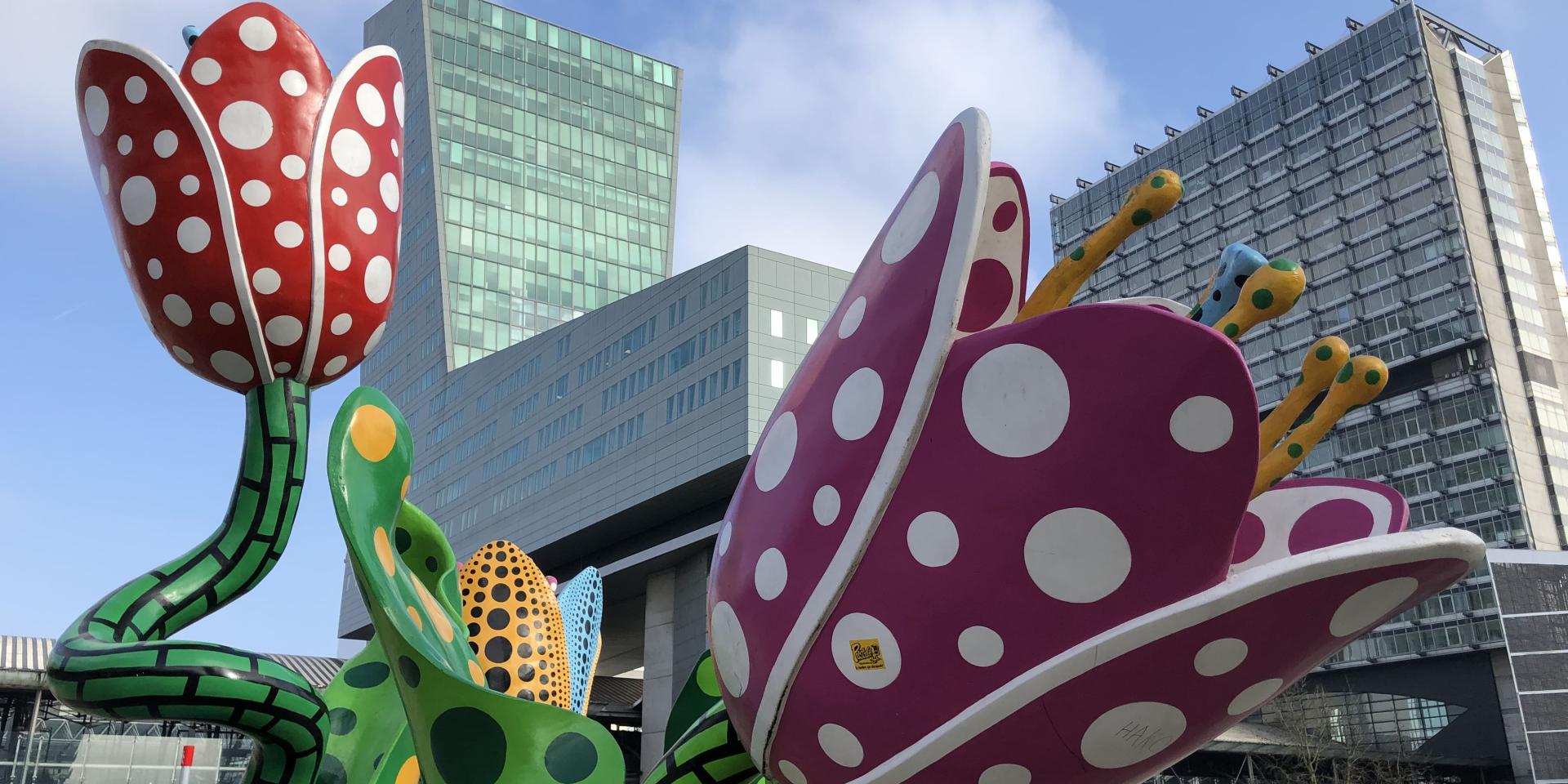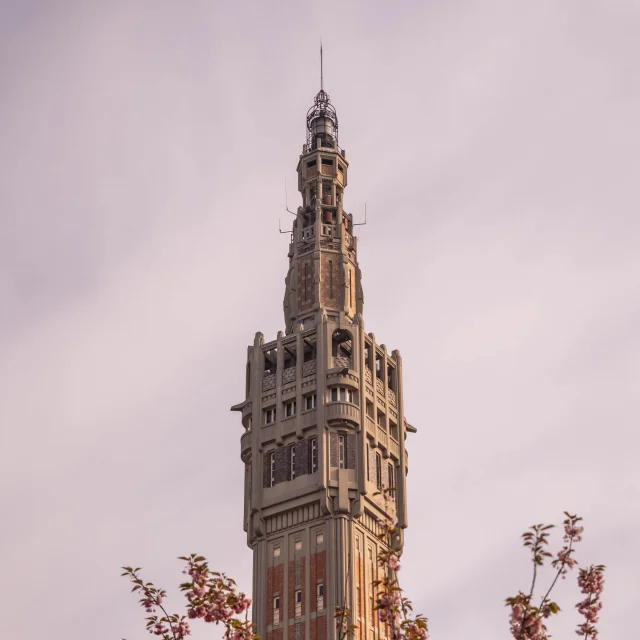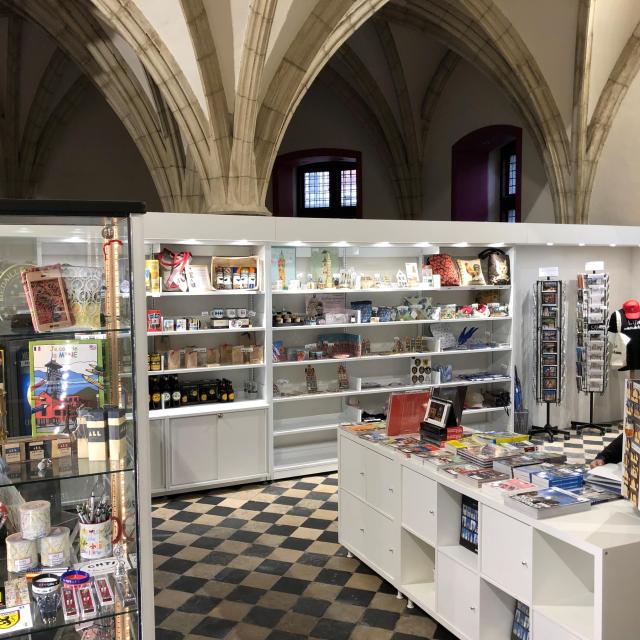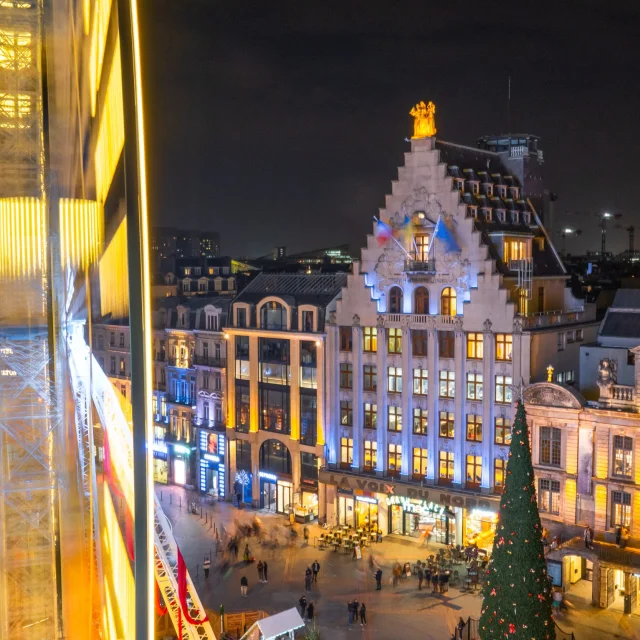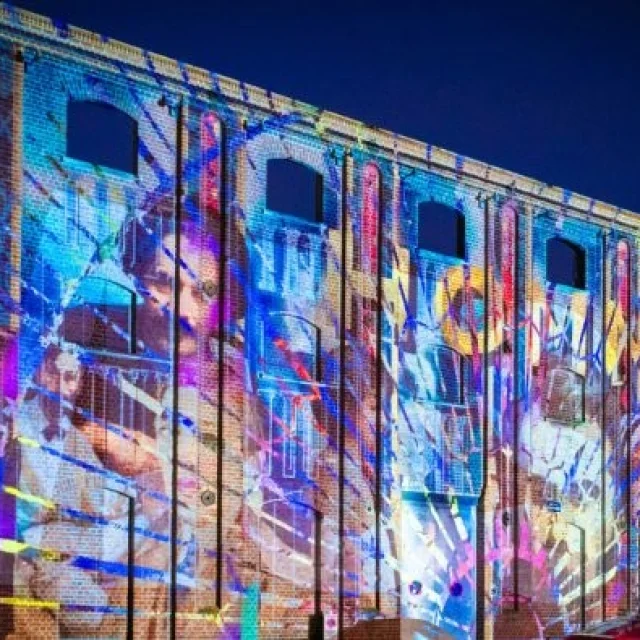Your eye will immediately be drawn to the monuments that line this busy district: the Vieille Bourse, the Opera House, the Grand-Garde, the Voix du Nord, the Chamber of Commerce and Industry and so much more! All the activity in this district revolves around the Place du Général de Gaulle, better known as the Grand Place.
Take a trip to the Vieille Bourse when the book market is open, to see the second-hand booksellers selling all sorts of books and objects.
Admire the remarkable preservation of this district steeped in history. With its cobbled streets and facades of brick and colored stone, the diversity of architectural styles forms a joyful mix, offering unique perspectives.
These include the house where Charles de Gaulle was born, Notre-Dame de la Treille Cathedral and the Hospice Comtesse. Take a guided tour of Vieux-Lille to better understand the city and its evolution.
In the 19th century, Napoleon III launched a vast program to extend the city. Architects mixed genres: Romanesque-Moorish, Gothic-Classical, Neo-Renaissance, Art Nouveau, Lille's eclecticism was in full swing. Boulevard de la Liberté is a fine example.
Stop off at Place de la République to contemplate the two monuments facing each other: the Prefecture and the Palais des Beaux-Arts.
This is Lille's "Latin Quarter", with numerous sites dedicated to knowledge: the former Faculty of Pharmacy, the Museum of Natural History, the Pasteur Institute of Lille, the School of Arts and Crafts, etc. A must-see feature of Lille's skyline: the town hall and its 104-metre-high belfry. Climb to the top for the best view of the city and its surroundings.
Stroll around Parc Jean-Baptiste Lebas and visit Gare Saint-Sauveur, or one of the many bars and restaurants in the area.
The Wazemmes district is famous for its market, which takes place every Sunday morning. It's also an area of exchange and culture open to all, with the Maison Folie Wazemmes and its inclusive cultural program. Every May 1, this is the venue for the "Louche d'Or" competition, which rewards the best soup in a folkloric atmosphere. But above all, Wazemmes is about its inhabitants' determination to preserve French savoir-vivre.
Soak up the unique atmosphere of its bistros, which leave no one indifferent.
This district was created in the 19th century as a link between Lille and two former neighboring villages: Wazemmes and Esquermes, annexed by decree of Napoleon III. Admire the architecture of the Grandes Ecoles and the Université Catholique de Lille, impressive in its size and preserved neo-Gothic style.
Last but not least, you can't miss the citadel and its verdant park: the citadel is a military base still in operation, which you can visit through the Lille Tourist Office.
- The Deûle canal runs through this charming district, still too little known by tourists. Its water station and restaurants are very popular when the weather is fine. Euratechnologies, Europe's largest start-up incubator, is located here, in a restored 19th-century spinning mill that's ideal for cycling.
Moulins used to be a small village, named after the dozen or so mills located there. Its landscape was completely transformed in the 19th century with the Industrial Revolution. Today, rehabilitated factories and preserved working-class housing make up the landscape of this fast-developing district.
Take a tour of the Maison Folie Moulins, a former brewery that hosts many festive events, and continue your stroll in the Jardin des Plantes.
In 1986, France and Great Britain signed a treaty to build the Channel Tunnel. Lille becomes a major rail hub at the crossroads of the routes to London, Brussels and Paris. The Lille-Europe railway station was built, followed by a large number of apartment blocks. A veritable business district, the people of Lille like to stroll through the Parc Matisse, then the Jardin des Géants, or visit an exhibition at the Tripostal.
Be amazed by Jean Pattou's immense fresco, entitled "Piranèse 2000", visible in the heart of the Lille-Europe metro station.
